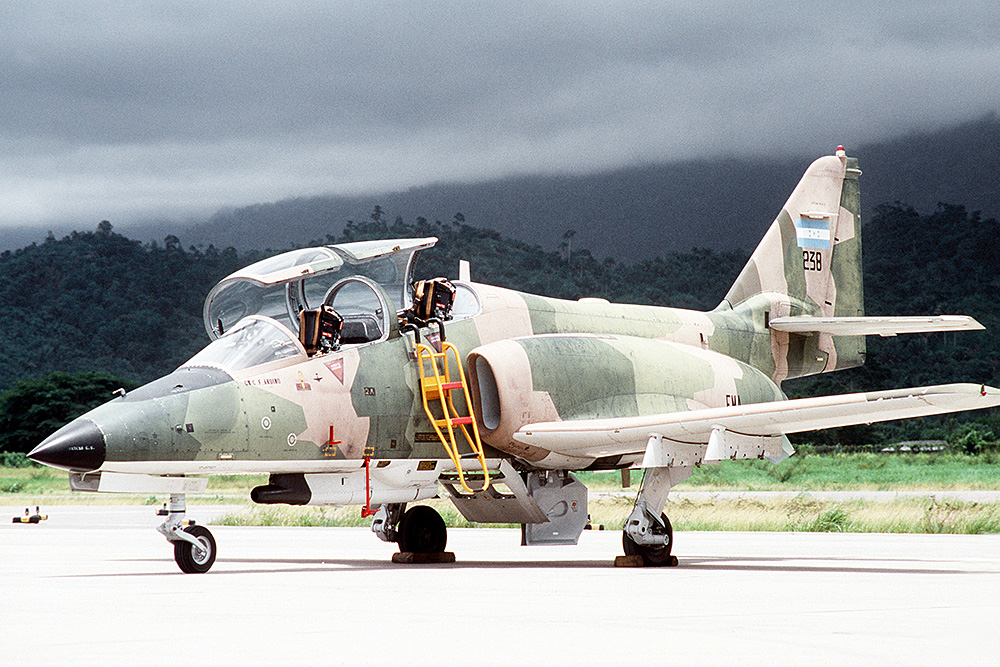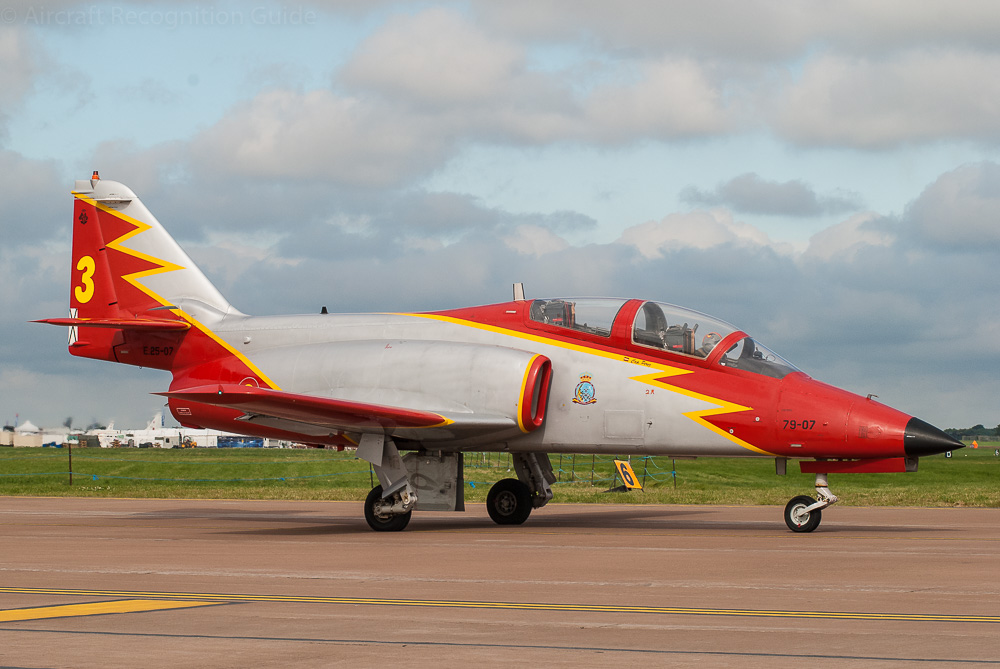
CASA C-101 Aviojet
The CASA C-101 Aviojet was the primary jet trainer of Spain and clearly has the same basic features as contemporary aircraft, especially the tandem cockpit in which the instructor in the back seat sits higher than the student pilot in the front. Straight, low mounted wings can also be found on similar aircraft. What is different on the Aviojet are the long, narrow air intakes in front of the wing roots and the single exhaust below the tail, instead of at the very end of the aircraft. The horizontal stabiliser is at the junction of the rear fuselage and vertical stabiliser.
Different versions
The different versions of the CASA Aviojet can externally only be distinguished by the presence of pylons under the wings, for storage of weapons.
C-101BB & C-101CC
The BB and CC versions of the Aviojet have a provision for storage of weapons under the wings. Additionally, they seem to have ventral fins under the exhaust, but we don't know if this is standard. For the rest they look the same as the dedicated trainer versions. The difference between both versions is that the C-101CC is a dedicated light attack version, while the C‑101BB has a dual training/attack rol. In Chile these aircraft are designated T-36 and A-36 Halcón respectively.
On the side view of the C-101CC you can better see the ventral fins near the exhaust, which seem typical for the C-101BB and C‑101CC. (photo Mike Freer/WikiMedia)
C-101EB
This is the dedicated trainer version, used exclusively by Spain. It has no weapons or provisions for them, nor ventral fins.
A part of Spain's Aviojets - all C-101EBs - is used by its demonstration team, Patrulla Águila.
Confusion possible with
Aermacchi MB339
The canopy and straight wings are similar to that of the Aviojet, but there are many difference in other parts. The landing gear of the MB339 is shorter and the air intakes are much smaller and nearly round. Furthermore the MB339 has the exhaust at the very rear of the aircraft.
AIDC AT-3

This is a twin engine jet trainer with engines at the sides of the fuselage but for the rest the AT-3 looks quite similar to the Aviojet.
British Aerospace Hawk
The Hawk has smaller air intakes, more D shaped, swept wings, a curved leading edge of the tail and horizontal stabilisers with anhedral. This should be enough not to mix it up with the CASA.
Aero L-39 Albatros
The Aero Albatros also has wider air intakes than the Aviojet. They have nearly the shape of half circles, and are placed at the side of the fuselage, just after the cockpit. The exhaust is at the rear of the fuselage. Finally, it has tip tanks as standard.
Karakorum K-8/Hongdu JL-8

The Chinese/Pakistani K-8 has a similar appearance as the Aviojet, except for the main key feature of the latter: the location of the exhaust. Moreover, the K-8 has nearly rectangular air intakes. In addition, the landing gears are straight. (photo: Bob Adams/WikiMedia)








